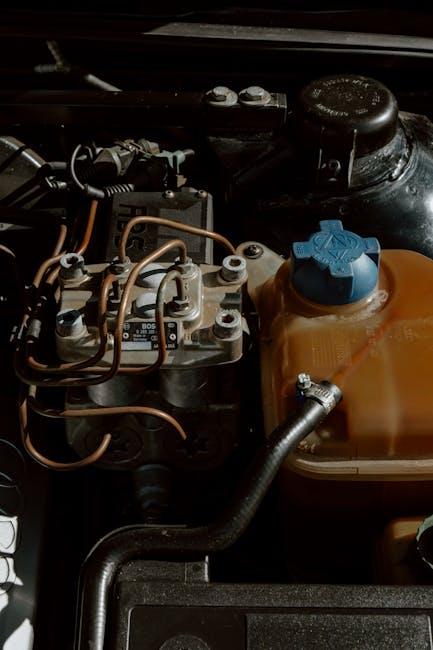Beneath the sleek exterior of every modern car lies a complex network of wires, quietly orchestrating everything from your headlights to the engine’s performance. Though often overlooked, a car’s wiring is the nervous system that keeps its many components communicating and functioning smoothly. Ignoring this vital aspect can lead to unexpected breakdowns, safety hazards, and costly repairs. In this article, we delve into why regularly checking your car’s wiring isn’t just a maintenance task—it’s an essential step toward ensuring reliability, safety, and peace of mind on the road.
Table of Contents
- Understanding the Role of Wiring in Vehicle Safety and Performance
- Common Signs of Wiring Problems to Watch For
- How Environmental Factors Impact Your Car’s Wiring Longevity
- Step-by-Step Guide to Inspecting Your Car’s Wiring System
- Preventative Maintenance Tips to Avoid Costly Electrical Repairs
- When to Consult a Professional for Wiring Issues
- Q&A
- Key Takeaways

Understanding the Role of Wiring in Vehicle Safety and Performance
Wiring acts as the nervous system of your vehicle, transmitting electrical signals that power critical components, from headlights to engine sensors. When wires become corroded, frayed, or loose, they can disrupt these signals, leading to malfunctions that compromise both safety and performance. For example, a faulty connection in the wiring harness can cause your airbags not to deploy during an accident or result in erratic engine behavior, impacting fuel efficiency and drivability. Regular inspection ensures early detection of issues like exposed wires or poor grounding, preventing costly repairs and dangerous breakdowns.
- Prevents electrical shorts that could cause fires
- Maintains optimal sensor functionality for engine health
- Ensures lighting and signals operate reliably for road safety
- Reduces risk of battery drain from faulty circuits
Understanding the complexity of your vehicle’s wiring can illuminate why some problems seem random or intermittent. A subtle fault such as a cracked wire or a loose connector might not trigger an immediate warning light but can degrade system performance over time. When troubleshooting, professionals often rely on wiring diagrams and testing tools to pinpoint faults. Below is a simplified table highlighting common wiring issues and their potential impacts:
| Wiring Issue | Possible Symptom | Safety/Performance Impact |
|---|---|---|
| Corrosion | Flickering lights | Reduced visibility at night |
| Frayed wires | Intermittent engine stalls | Unreliable engine performance |
| Loose connections | Faulty airbags | Compromised crash safety |
| Short circuits | Blown fuses | Electrical system failure |
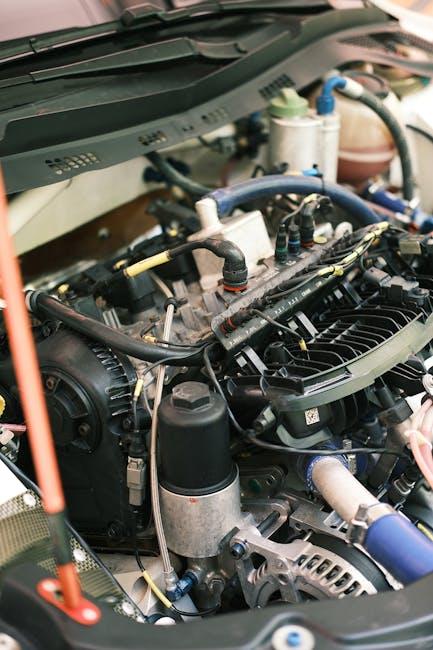
Common Signs of Wiring Problems to Watch For
When cables and connectors inside your car start to fail, they often send early warnings that shouldn’t be ignored. You might notice flickering dashboard lights or intermittent issues with your headlights and taillights. These are classic symptoms that your wiring could be compromised. Other signs include unusual smells, such as burning plastic or rubber, which signal overheating or short circuits lurking beneath the hood. Additionally, if your car suddenly struggles to start or electrical accessories like power windows and radios behave erratically, these can be clear indicators of underlying wiring malfunctions.
Keep an eye out for:
- Dim or flickering lights
- Blown fuses frequently
- Electrical system failures during driving
- Corroded or frayed wires
- Bizarre noises like buzzing or clicking
| Symptom | Potential Cause | Impact |
|---|---|---|
| Flickering Dashboard Lights | Loose wiring connection | Intermittent electrical failures |
| Burning Smell | Short circuit or overheated wire | Fire hazard, malfunctioning components |
| Blown Fuses Often | Electrical overloads | Component shutdown |

How Environmental Factors Impact Your Car’s Wiring Longevity
Extreme temperatures can wreak havoc on your car’s wiring by causing insulation to crack or become brittle over time. When the protective layer deteriorates, wires become exposed, increasing the risk of shorts and electrical failures. Additionally, high humidity and moisture contribute to corrosion on wiring terminals and connectors, further compromising the electrical system’s integrity. These environmental aggressors work quietly but steadily, undermining the reliability of your vehicle’s essential functions.
Consider the following common environmental threats that affect wiring durability:
- UV Exposure: Sunlight gradually breaks down insulation materials, leading to premature aging.
- Salt and Road Chemicals: Especially in winter, salt can accelerate corrosion on wiring components.
- Dirt and Debris: Particles can collect in connectors, causing poor electrical contact.
| Environmental Factor | Impact on Wiring |
|---|---|
| Heat | Insulation softening and melting risk |
| Moisture | Corrosion and electrical shorts |
| Vibration | Physical wear and wire fatigue |
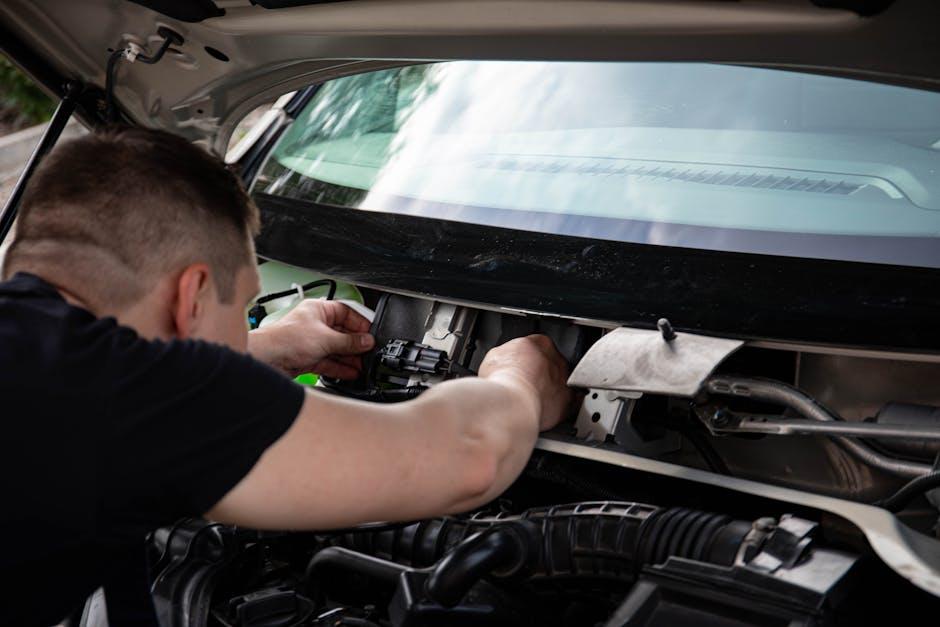
Step-by-Step Guide to Inspecting Your Car’s Wiring System
Begin by locating the main wiring harness under the hood and inside the cabin. Use a flashlight to thoroughly inspect each bundle for signs of wear, such as cracks, fraying, or corrosion. Pay special attention to connection points and grounding wires, as these are common failure spots. Carefully trace each wire back to its source, ensuring none are loose or disconnected. Don’t forget to check for signs of overheating, like melted insulation or discoloration, which can indicate an electrical fault.
Once visual inspection is complete, use a multimeter to test wire continuity and voltage levels. Follow this simple checklist to guide your tools and techniques:
- Check continuity: Confirm there is a complete circuit without breaks.
- Test voltage: Ensure wires are carrying the correct voltage according to manufacturer specs.
- Inspect fuses: Replace any blown fuses and note any recurring issues.
| Tool | Purpose | Tip |
|---|---|---|
| Multimeter | Measure voltage & continuity | Set to correct mode before testing |
| Wire Brush | Clean corroded connections | Use gently to avoid damage |
| Electrical Tape | Insulate exposed wires | Wrap tightly for protection |
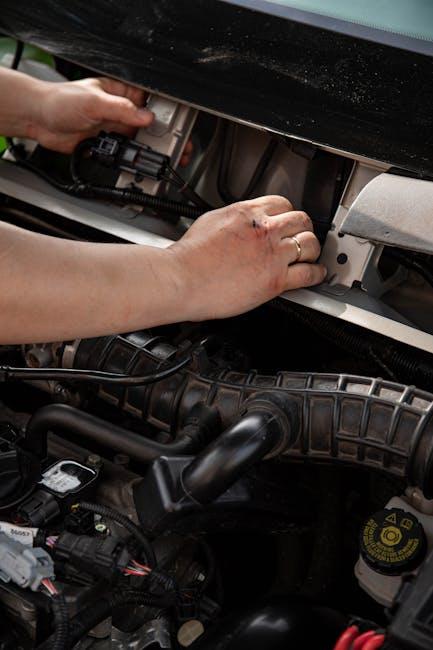
Preventative Maintenance Tips to Avoid Costly Electrical Repairs
Regular inspections of your car’s wiring system can significantly reduce the risk of unexpected malfunctions and expensive repairs down the road. Start by looking for visible signs of wear and tear such as cracked insulation, frayed wires, or corrosion around connectors. These seemingly minor issues can escalate quickly, leading to short circuits or electrical failures that affect critical components like your headlights, dashboard, or ignition system.
Develop a routine habit of checking key wiring areas:
- Battery terminals and cables for secure connections
- Fuse box for any blown fuses or loose fittings
- Under-hood wiring harnesses for moisture or dirt build-up
- Grounding points to ensure proper electrical flow
| Common Wiring Issue | Potential Impact | Preventative Action |
|---|---|---|
| Frayed Wire Insulation | Short Circuit | Regular visual checks & protective sleeving |
| Corroded Connectors | Intermittent Electrical Failure | Clean terminals & use dielectric grease |
| Loose Battery Cables | Starting Problems | Tighten connections & inspect regularly |
By proactively maintaining your wiring, you preserve your vehicle’s reliability and keep repair bills from stacking up. Remember, a little effort invested in your car’s electrical health today can save you substantial costs and downtime in the future.
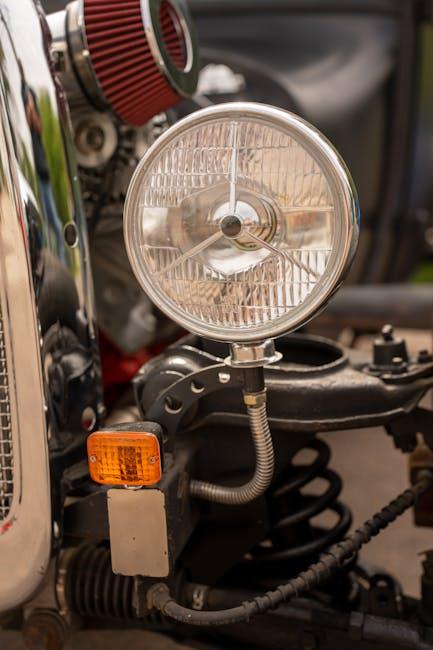
When to Consult a Professional for Wiring Issues
Attempting to diagnose or fix wiring problems on your own can be tempting, especially with simple fixes often shared across online forums. However, certain warning signs signal the need for professional expertise. If you notice persistent flickering lights, unexplained battery drain, or strange odors like burning plastic, these issues often stem from deeper electrical faults that require specialized tools and knowledge to resolve safely. Ignoring these symptoms or patching them temporarily could lead to more significant damage or even pose a fire risk.
It’s wise to seek professional help when you encounter any of the following:
- Recurring dashboard warning lights despite replacing fuses or bulbs
- Intermittent loss of power to essential components such as the stereo, lights, or engine control modules
- Visible corrosion or melted wiring insulation after inspecting the battery or fuse box
- Unusual noises like buzzing or sparking when using electrical accessories
| Symptom | Potential Issue | Why a Pro? |
|---|---|---|
| Flickering interior lights | Loose or damaged wires | Requires safe testing with diagnostic tools |
| Battery keeps dying | Parasitic drain from faulty wiring | Expert tracing to find hidden shorts |
| Burning smell near fuse box | Overloaded circuit or melted connections | Critical for preventing fire hazards |
Q&A
Q&A: The Importance of Checking Your Car’s Wiring
Q1: Why should I even care about my car’s wiring? It’s not like I can see it sitting there!
A1: Great question! Though tucked away and out of sight, your car’s wiring is like its nervous system—transmitting crucial signals that keep everything running smoothly. Ignoring it is like ignoring a heartbeat; problems underground can lead to sudden malfunctions or safety hazards.
Q2: What kinds of problems can faulty wiring cause?
A2: Faulty wiring can cause a domino effect: flickering lights, malfunctioning dashboard indicators, dead batteries, or worse—electrical shorts that might ignite a fire. Sometimes, these issues sneak up slowly, so regular checks can save you from costly and dangerous surprises.
Q3: How often should I have my car’s wiring inspected?
A3: Think of wiring checks as part of your routine tune-up. While no fixed schedule fits all, checking your wiring annually or during major services is wise. Of course, if you notice odd electrical behavior—like warning lights blinking erratically or sudden power loss—don’t wait; have it examined ASAP.
Q4: Can I check the wiring myself, or should I leave it to professionals?
A4: If you’re comfortable with a multimeter and basic wiring knowledge, a DIY inspection can catch obvious signs like frayed wires or loose connections. However, a thorough diagnosis often requires specialized tools and expertise, so leaning on a professional mechanic is your safest bet.
Q5: Is wiring maintenance expensive?
A5: Generally, preventing problems by regular inspections and minor repairs is far less costly than dealing with electrical failures later. Fixing a small wiring issue early can save you hundreds or even thousands compared to replacing major components damaged by electrical shorts.
Q6: Does age affect the wiring’s reliability?
A6: Absolutely. Over time, wires can degrade from heat, moisture, and vibration. Older cars often have brittle insulation and corroded connections, raising the risk of failures. Keeping an eye on your car’s wiring quality is especially important as it ages.
Q7: Can aftermarket modifications impact my car’s wiring?
A7: Yes! Adding custom audio systems, lighting, or other gadgets changes the electrical load and wiring pathways. If these modifications aren’t done properly, they can increase the chance of shorts and drain your battery. Always get wiring work done by professionals to maintain safety.
Q8: What’s the takeaway?
A8: Your car’s wiring might be hidden, but it’s vital. Regular checks keep your vehicle reliable and safe, preventing small issues from turning into big headaches. Treat your wiring like the silent hero it is—your car’s electrical lifeline deserves a little attention!
Key Takeaways
In the intricate dance of metal and electricity that powers your vehicle, the wiring serves as the silent conductor—guiding every signal and spark with precision. Overlooking this vital network can lead to unexpected disruptions, costly repairs, or even safety hazards. By taking the time to check your car’s wiring, you’re not just preserving a tangle of cables; you’re safeguarding the harmony beneath your hood and ensuring your journey remains smooth and secure. After all, in the symphony of driving, every wire plays a part worth protecting.

